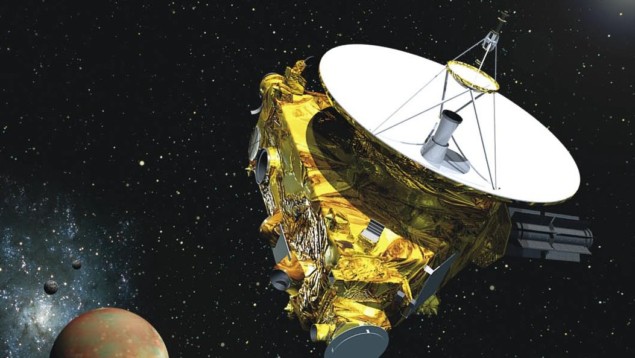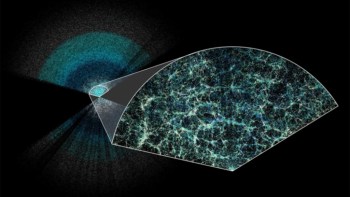
An unexpected excess of light from beyond the Milky Way could be evidence of decaying dark matter particles, a trio of US-based astronomers has suggested. Drawing from observations made by NASA’s New Horizons probe, José Luis Bernal, Gabriela Sato-Polito and Marc Kamionkowski at Johns Hopkins University propose that this light could provide evidence for the decay of axions, which are hypothetical particles that could account for some of the dark matter that appears to permeate the universe.
The cosmic optical background (COB) encompasses all light originating from sources beyond the Milky Way and it should contain important information about the structure of the universe. However, astronomers have found it very difficult to disentangle the COB from light originating much closer to home – in particular, sunlight that is scattered by interplanetary dust.
Best known for its flyby of Pluto in 2015, New Horizons has since advanced deep into the outer solar system. The probe is currently in the Kuiper Belt – which contains a huge number of icy objects. Crucially for astronomers interested in the COB, interplanetary dust is far sparser in the Kuiper Belt than it is in regions closer to the Sun. Recently, the COB has been measured using New Horizon’s Long Range Reconnaissance Imager (LORRI) – which previously captured the famous high-resolution images of Pluto’s surface. Away from the influence of scattered sunlight, these new observations provide the most precise measurement of the COB to date.
Nearly twice as bright
A surprising discovery is that the COB is almost twice as bright as would be expected from the latest galaxy surveys. This excess has a statistical significance of 4σ, which means that it is unlikely that the observation is the result of a statistical fluctuation.
Now the Johns Hopkins trio suggests that this excess light could come from the decay of axions. These are hypothetical particles with tiny masses that could account for dark matter – itself a hypothetical substance that is invoked to explain puzzling observations of galaxies and larger-scale structures in the universe.

Squeezed light boosts the search for dark matter axions
To explain LORRI’s observations, the astronomers investigated a model that has axions decaying into photons. They calculated the photon energy distribution resulting from these decays, and how they would contribute to the excess light detected by LORRI.
The team’s results suggest that excess COB photons could have originated from axions with masses ranging from 8–20 eV/c2, with average decay lifetimes of roughly 1015 years. Furthermore, if the axion decay produces photons with one specific energy, there should be evidence for this production in the spectral distribution of light in the COB.
The trio will now search for this spectral signature in future COB observations, which will improve as New Horizons advances further towards the edge of the solar system.
The research is described in Physical Review Letters.



